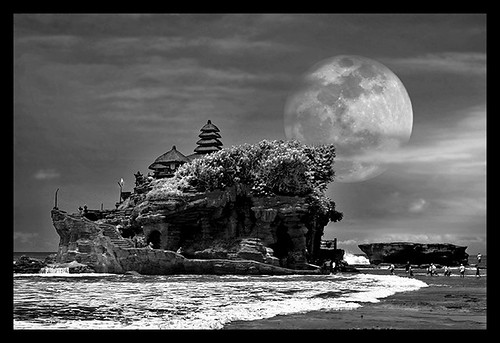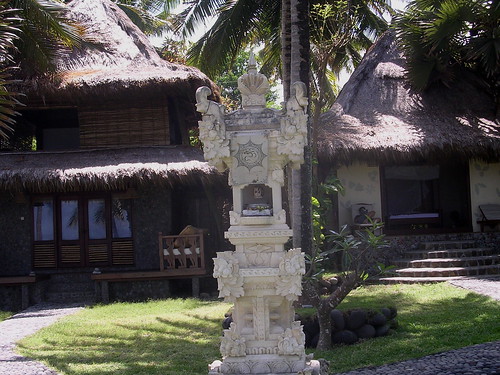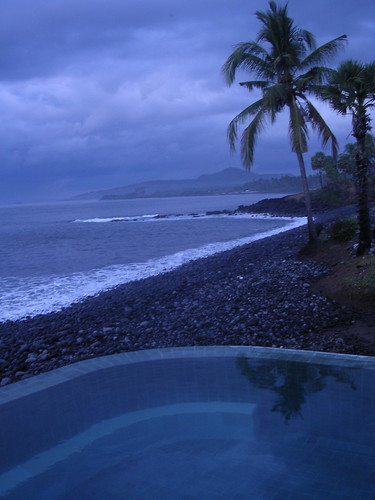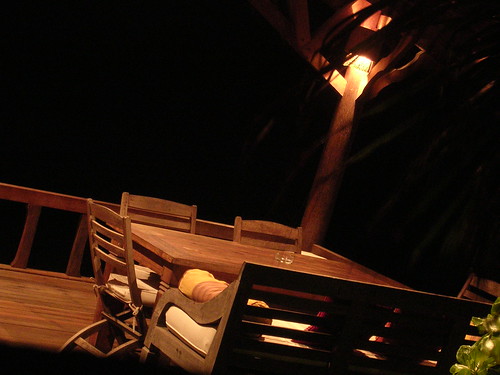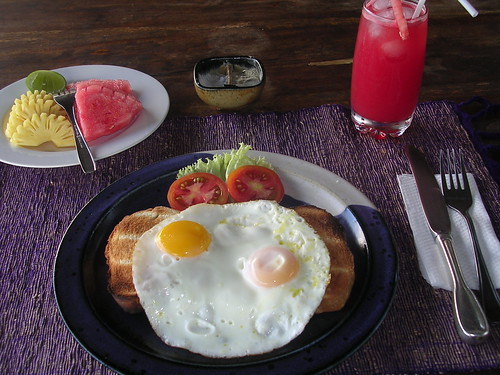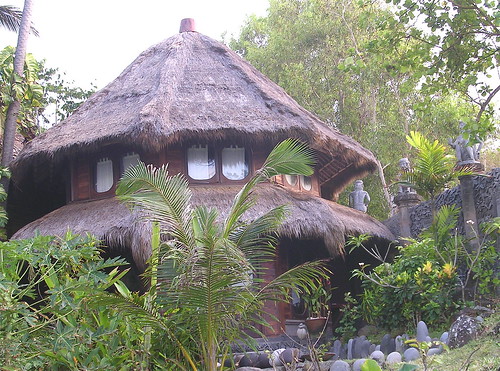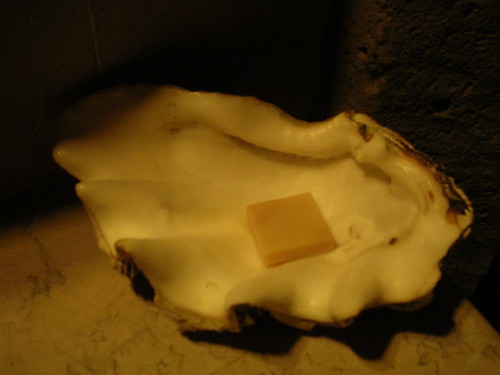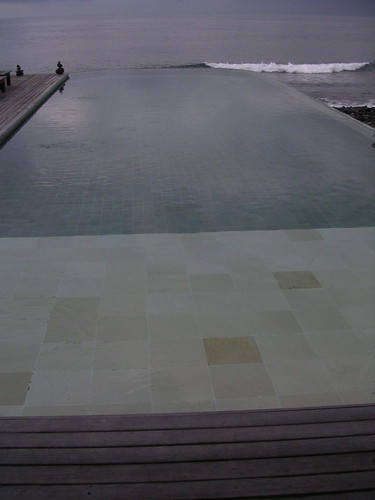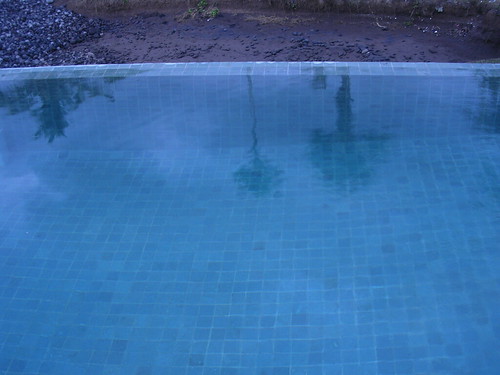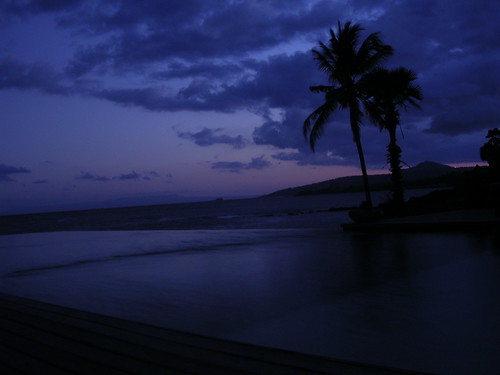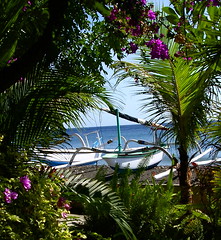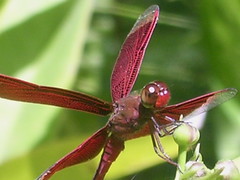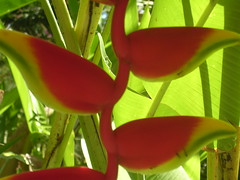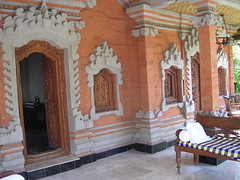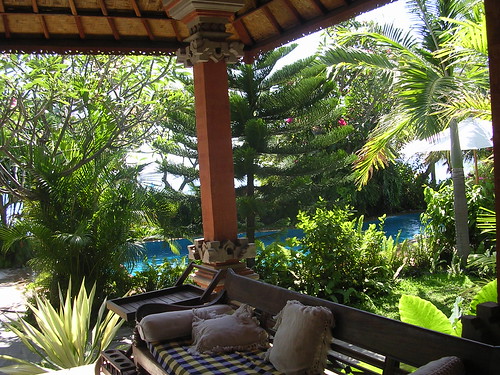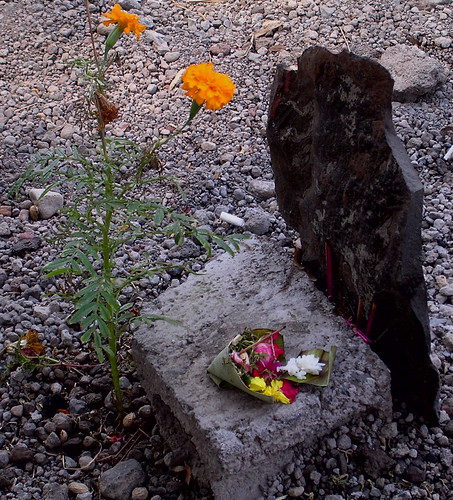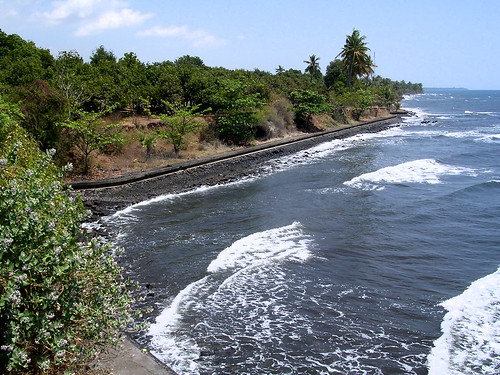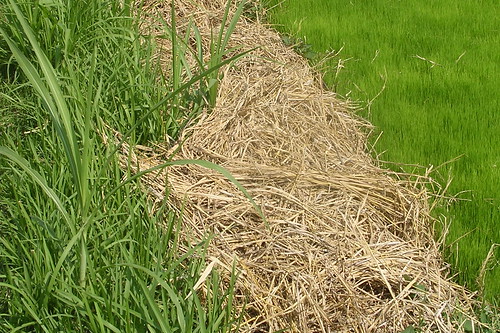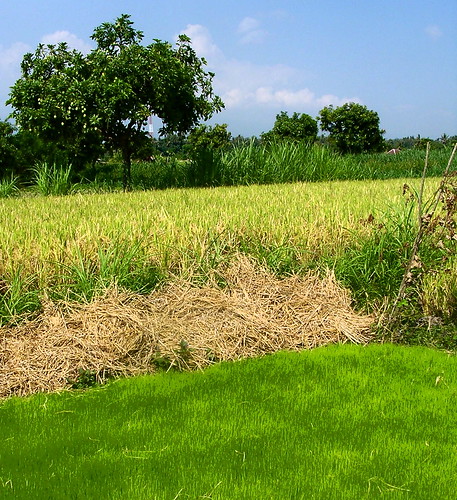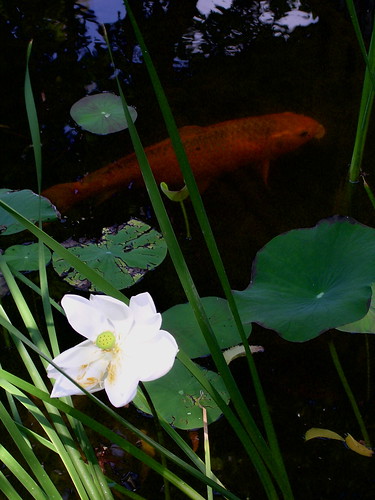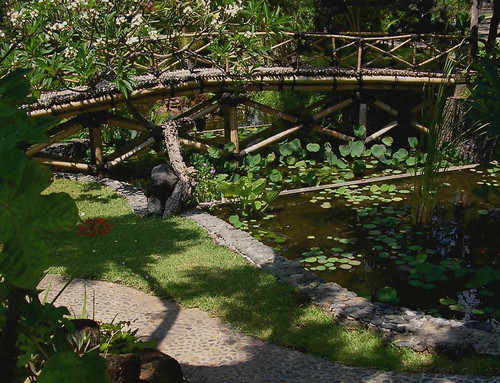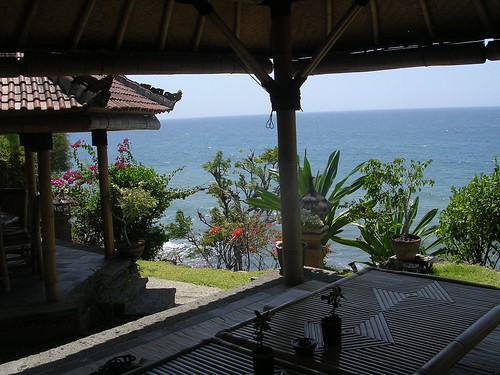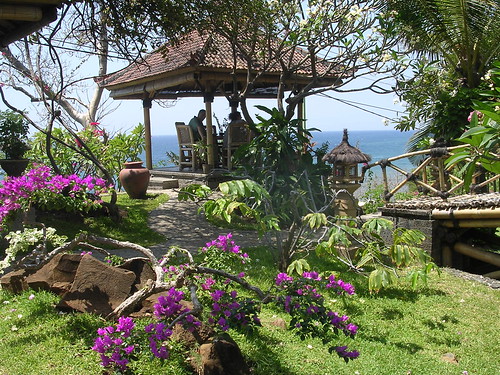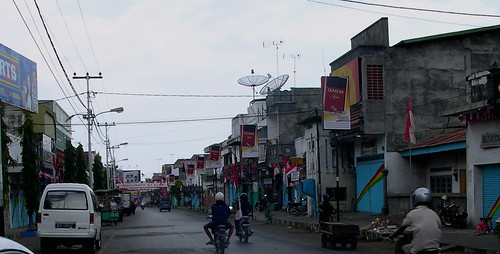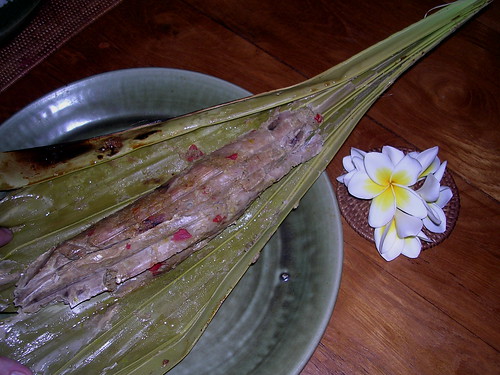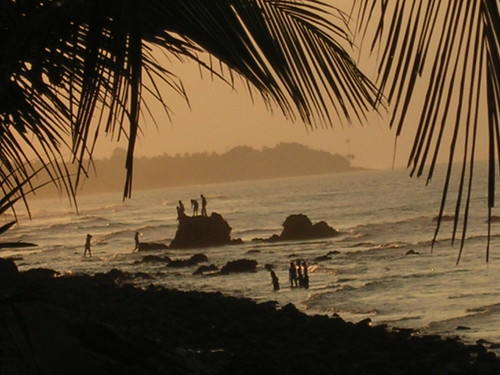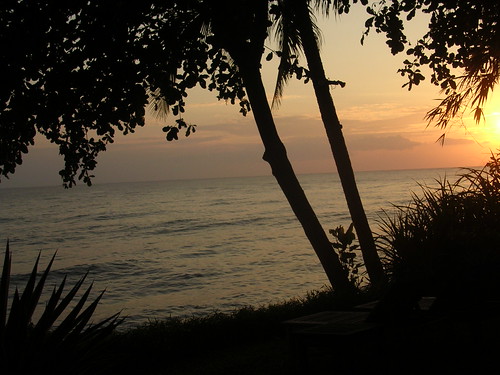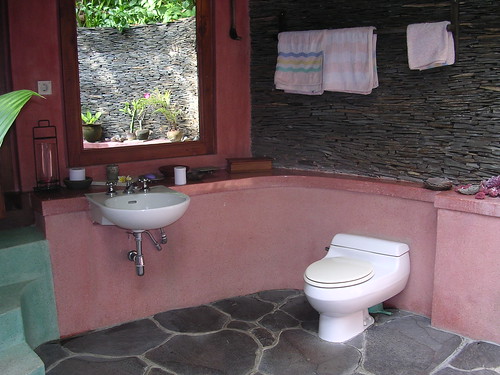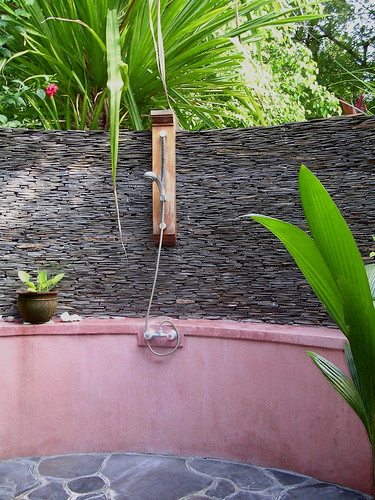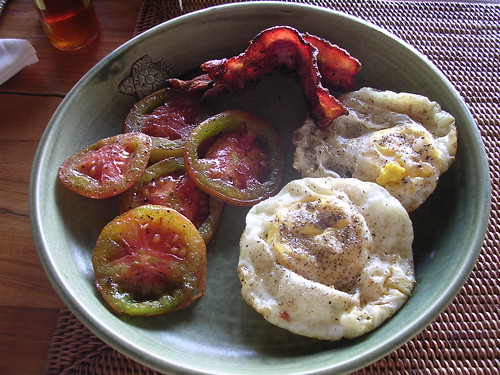
The food was really good, and apart from breakfast, authentically Balinese so far as I could tell. Breakfast had coffee, tea, ginger tea, toast from freshly baked bread, bacon, eggs, jaffles, baked bananas, pancakes, french toast, fruit salad, yoghurt. Otherwise, the food is Balinese, though there were some Thai dishes. We tried
sayur ikan, a fish curry,
ikan dalam daun, a kind of fish casserole steamed in banana leaf packages,
mie goreng (fried noodles, and really an Indonesian rather than specifically Balinese dish, pictured),
pepes ikan (usually fish wrapped in banana leaves, but here, fish wrapped in the leaf of the palm used for palm sugar)
sate ikan (you should be able to guess what that is by now),
urab, a dish of green vegetables (beans, water spinach, and sprouts) in garlicky coconut milk, and
buncis dan Cabe Lombok green beans in a sweet and sour tomato sambal. All good. The fish is sure to have been caught the same morning.
In the boondocks it is best to stick to the local cuisine as a rule. That is true of Cilik's; the omelettes are not quite omelettes, the eggs and bacon just a little on the weird side. The yoghurt though, is made there, using a yoghurt maker, and was fantastic, good enough, in fact, to make me want to have a yoghurt maker.
There were a couple of warungs and restaurants nearby but the other hotels in the area have fallen prey to the downturn occasioned by the bombing. There is another home stay run by, or perhaps owned by, a German woman up the hill, with rooms for in the vicinity of A$10. The village of Air Saneh is one and a half kilometres east from Cilik's Beach Garden.
Bali
